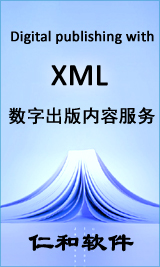材料科学技术(英文)
Molecular structures of adsorbed waters at metal surfaces are essential to understanding the widespread processes ranging from ice nucleation, to water involved catalytic surface reactions, to many phenomena of biological and astrochemical importance. Instead of providing a comprehensive literature survey, we focus in this review on detailed structural information, such as water orientations and occupation sites, of intact waters at low temperatures and ultrahigh vacuum conditions investigated by various surface techniques. Despite progresses made in direct imaging the surface waters at high resolutions, as exemplified in a close-packed (e.g. Pd(111)) and an open metal surfaces (e.g. Cu(110)) supported waters, structural mysteries remain at diverse metal surfaces. We highlight experimental challenges and discuss structural mysteries in elucidating surface water structures at molecular levels.
关键词:
Water monolayer;Surface structure;Transition metal surfaces;scanning-tunneling-microscopy;density-functional theory;vibrational-spectra;ice;pt(111);adsorption;dissociation;ru(0001);excitation;molecules
Jibiao Li Shenglong Zhu Fuhui Wang
材料科学技术(英文)
Molecular structures of adsorbed waters at metal surfaces are essential to understanding the widespread processes ranging from ice nucleation, to water involved catalytic surface reactions, to many phenomena of biological and astrochemical importance. Instead of providing a comprehensive literature survey, we focus in this review on detailed structural information, such as water orientations and occupation sites, of intact waters at low temperatures and ultrahigh vacuum conditions investigated by various surface techniques. Despite progresses made in direct imaging the surface waters at high resolutions, as exemplified in a close-packed (e.g. Pd(111)) and an open metal surfaces (e.g. Cu(110)) supported waters, structural mysteries remain at diverse metal surfaces. We highlight experimental challenges and discuss structural mysteries in elucidating surface
water structures at molecular levels.
关键词:
Water monolayer
,
surface structure
,
transition metal surfaces
J.Q.ZHANGD.J.YOUNG
中国腐蚀与防护学报
Metaldusting attacks iron, low and high alloy steels and nickel-or cobalt-base alloys by disintegrating bulk metals and alloys into metal particles in a coke deposit. It occurs in strongly carburising gas atmospheres (carbon activity aC>1) at elevated temperatures (400 ℃~1000 ℃). This phenomenon has been studied for decades, but the detailed mechanism is still not well understood. Current methods of protection against metal dusting are either directed to the process conditions-temperature and gas composition-or to the development of a dense adherent oxide layer on the surface of the alloy by selective oxidation. However, metal dusting still occurs by carbon dissolving in the base metal via defects in the oxide scale. The research work at UNSW is aimed at determining the detailed mechanism of metal dusting of both ferritic and austenitic alloys, in particular the microprocesses of graphite deposition, nanoparticle formation and underlying metal destruction. This work was carried out using surface observation, cross-section analysis by focused ion beam and electron microscopic examination of coke deposits at different stages of the reaction. It was found that surface orientation affected carbon deposition and metal dusting at the initial stage of the reaction. Metal dusting occurred only when graphite grew into the metal interior where the volume expansion is responsible for metal disintegration and dusting. It was also found that the metal dusting process could be significantly changed by alterations in alloy chemistry. Germanium was found to affect the iron dusting process by destabilising Fe3C but increasing the rate of carbon deposition and dusting, which questions the role of cementite in ferritic alloy dusting. Whilst adding copper to iron did not change the carburisation kinetics, cementite formation and coke morphology, copper alloying reduced nickel and nickel-base alloy dusting rates significantly. Application of these fundamental results to the dusting behaviour of engineering alloys is discussed.
关键词:
metal dusting
,
null
,
null
,
null
,
null
,
null
G.Q. Liu
,
Y.Y. Meng
,
S.H. Liu
,
Y.H. Hu
金属学报(英文版)
DNA takes on multi-different conformations such as A-, B-, C-, D- and Z-form. These conformations can transit to one another when DNA deposited in some metal ions solutions or when changing the concentrations of the same metal ions. Here, several major conformational transitions of DNA induced by metal ions under different environment were introduced and the mechanism of the interaction of metal ions with DNA was discuss in detail.
关键词:
DNA
,
null
,
null
Ting YU
,
Zexaing SHEN
材料科学技术(英文)
Metal oxide nanostructures (CuO, Co3O4, ZnO and α-Fe2O3) have been successfully fabricated by a simple and efficient method: heating the appropriate metals in air at low temperatures ranging from 200 to 400℃. The chemical composition, morphology and crystallinity of the nanostructures have been characterized by micro-Raman spectroscopy, X-ray diffraction, scanning electron microscopy and transmission electron microscopy. Two mechanisms: vapor-solid and surface diffusion play dominant roles in the growth of metal oxide nanostructures starting with low melting point metals (Zn and Cu) and high melting point metals (Fe and Co), respectively. With sharp ends and large aspect ratio, the metal oxide nanostructures exhibit impressive field-induced electron emission properties, indicating their potentials as future electron source and displays. The water wettability and anti-wettability properties of iron oxide nanoflakes were also discussed in this work.
关键词:
Metal oxide
,
oxide
,
nanostructures
,
field
,
emiss
WANG Zhongguang SUN Zhengming YU Weicheng ** State Key Laboratory for Fatigue and Fracture of Materials
,
Institute of Metal Research
,
Academia Sinica
,
Shenyang.110015
,
China+ To whom correspondence should be addressed
材料科学技术(英文)
Based mainly on the work done at the authors' laboratory in recent years,this paper examines what is currently known about the cyclic deformation and fatigue properties of metal matrix composites, with particular emphasis on discontinuous fiber (whisker or particulate)-reinforced Al composites. The following items are discussed:fatigue strength and life,cyclic deformation and microstructural evolution,microcrack initiation and growth,fatigue crack propagation behaviour.
关键词:
metal matrix composite
,
null
,
null
,
null






